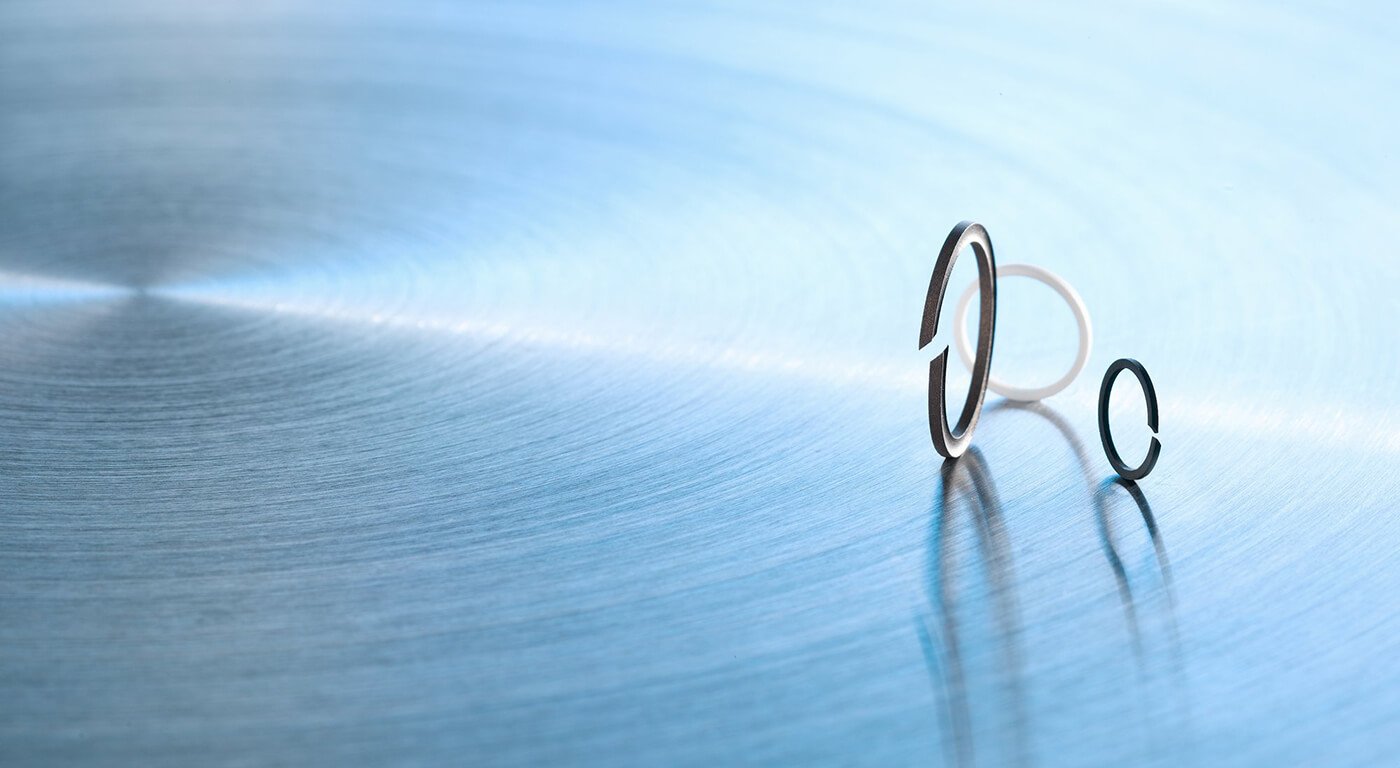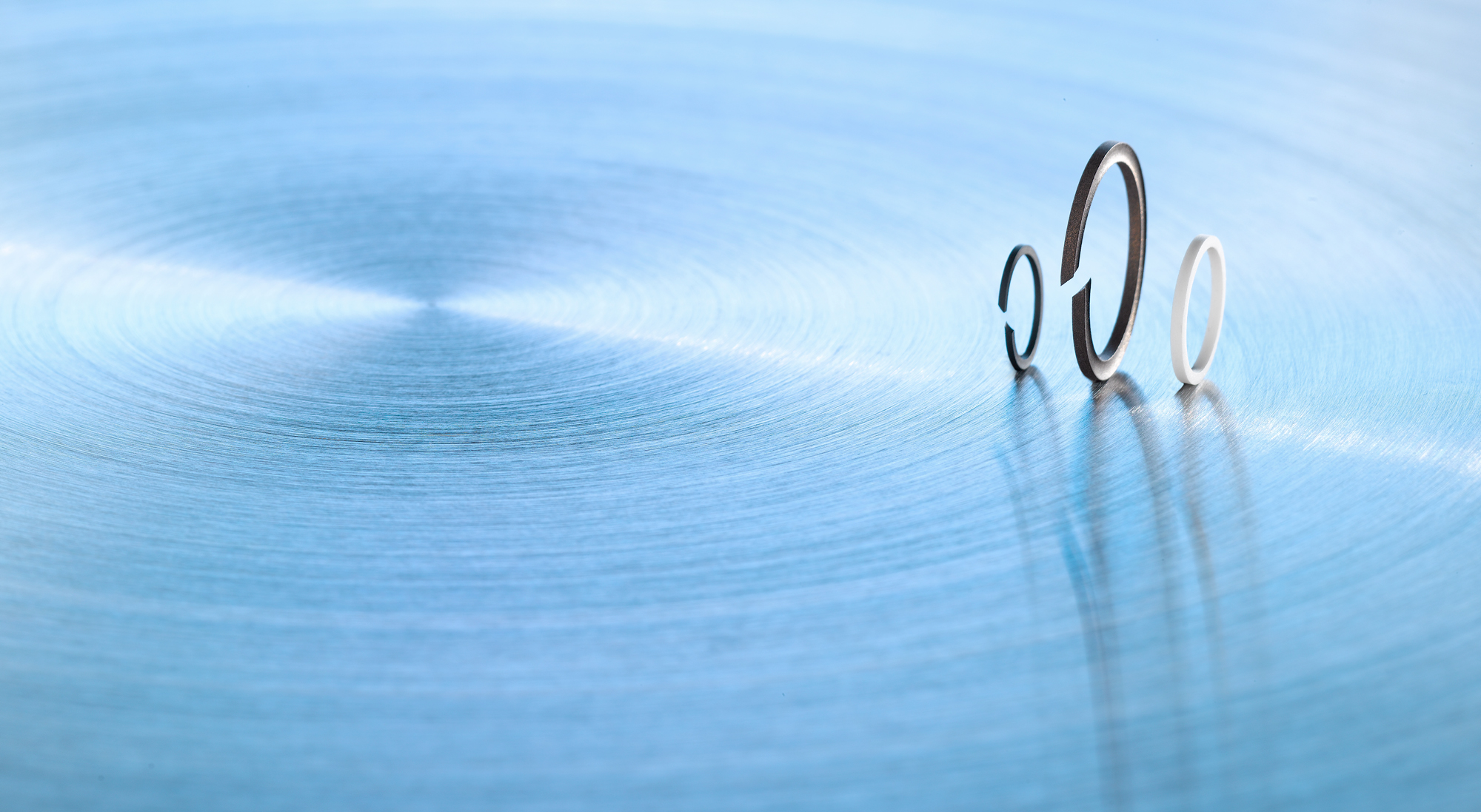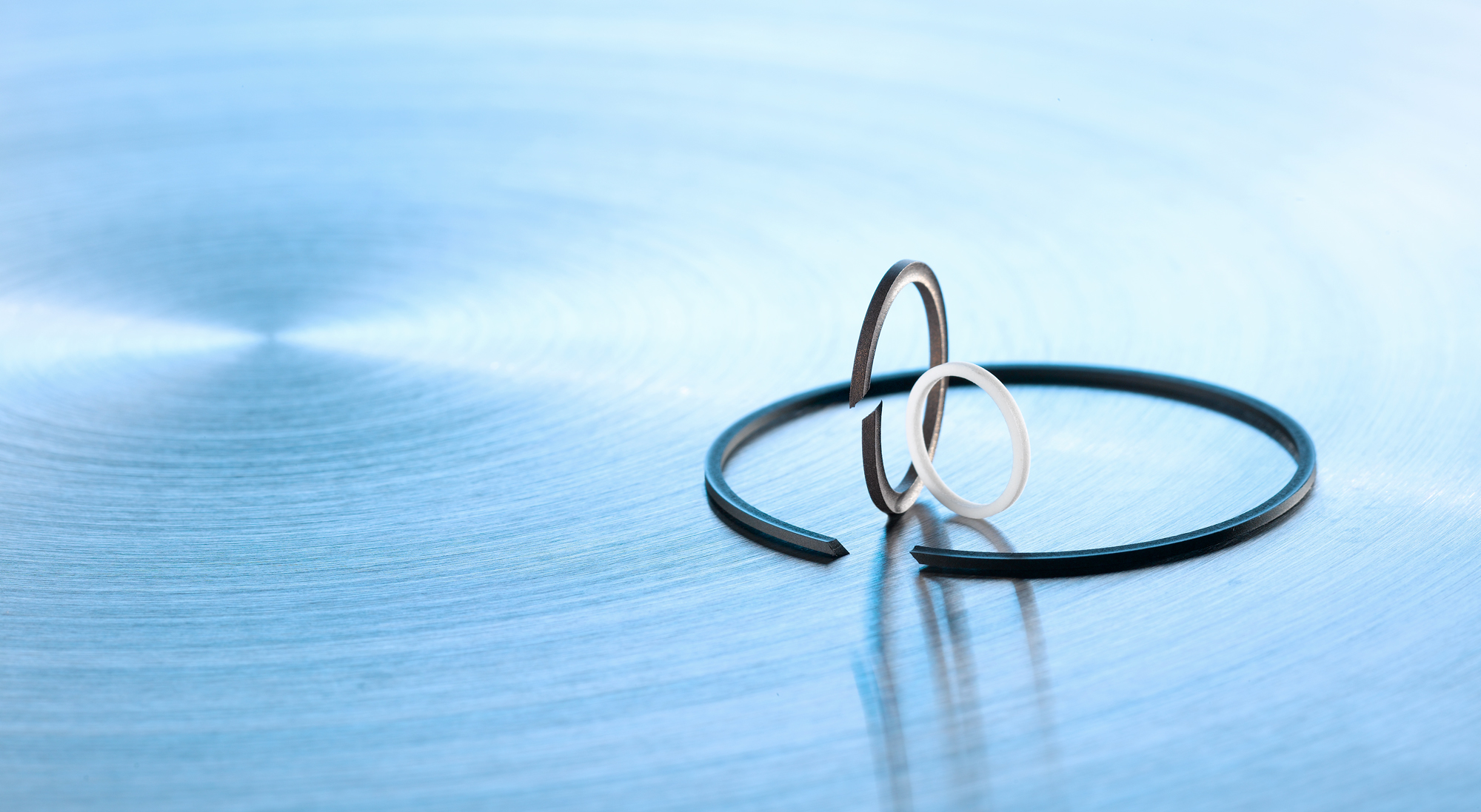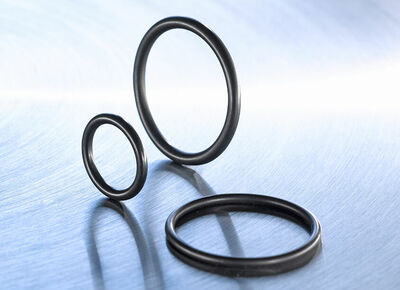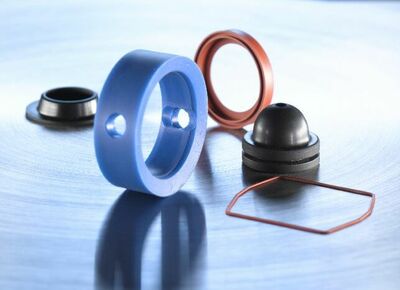The secret helper: the back-up ring
O-rings count among a machine’s most sensitive components, and must be protected from pressure damage. At high pressure, and without this protection, O-rings can be forced into the sealing gap by extrusion, and destroyed. Leaks then result. Some constructions do not permit the sealing gap to be designed so that it is sufficiently small in relation to the system pressure. In such circumstances, the use of a back-up ring makes sense. They protect the O-ring from being destroyed if high pressure occurs or larger gaps must be sealed.
But expertise is required in this respect: Back-up rings with special properties
The back-up rings are predominantly made from PTFE. This material’s favourable properties speak for themselves: the enormous temperature range of from -200°C to 260°C, the appropriate hardness and a virtually universal resistance to various media.
PTFE’s flow properties protect the softer rubber rings from mechanical damage. To do so, the back-up rings are fitted behind the O-ring on the non-pressure side, or, if pressure direction changes, at both sides. When it is under pressure, the back up ring deforms and therefore bridges the gap that must be sealed.
Depending on the application, the following variants of ISO 3601-4-compliant back-up rings are used:
- Spiral back-up rings, type T1
- Diagonal slit back-up rings, type T2
- Unslit back-up rings, type T3
- Diagonal slit concave back-up rings, type T4
- Unslit concave back-up rings, type T5
- Special variants

